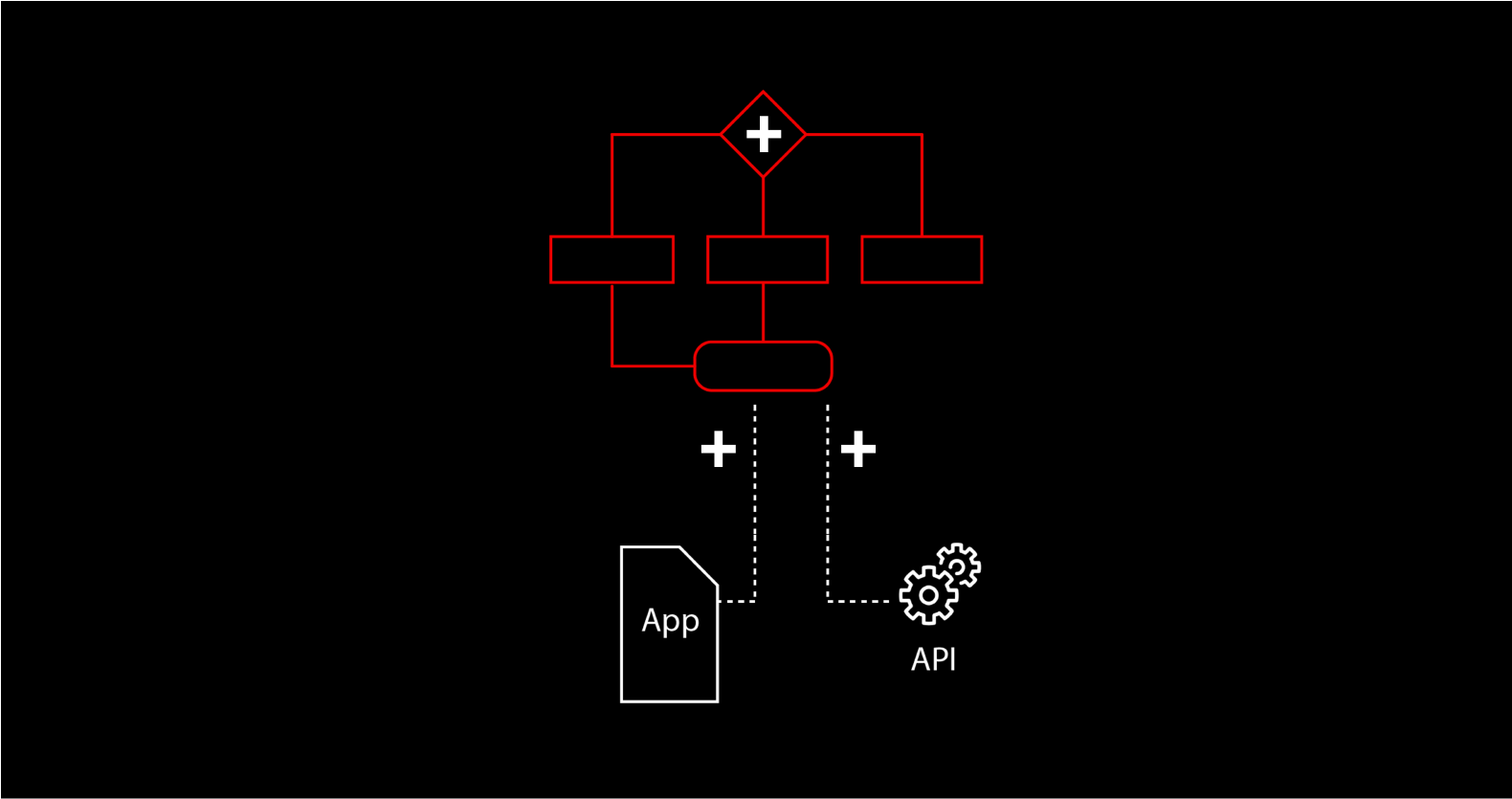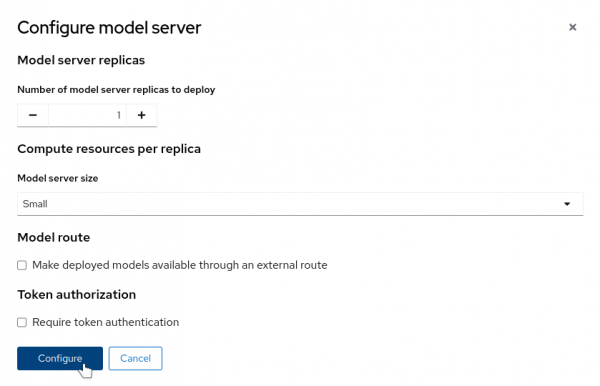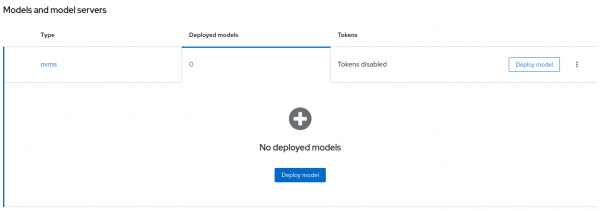Page
Create a model server

We are now ready to create a model server!
In the Models and model servers section, click on Configure server (Figure 5).
Choose your configuration options for your model server.
- Number of model server replicas: This is the number of instances of the model server engine that you want to deploy. You can scale it up as needed, depending on the number of requests you will receive.
- Model server size: This is the amount of resources, CPU, and RAM that will be allocated to your server. Select the appropriate configuration for size and the complexity of your model.
- Model route: Check this box if you want the serving endpoint (the model serving API) to be accessible outside of the OpenShift cluster through an external route.
- Token authorization: Check this box if you want to secure or restrict access to the model by forcing requests to provide an authorization token.
When you have finished your configuration, click on Configure (Figure 6).
Your model server is now ready (Figure 7).
If you want to see details for the model server, click on the Type tab (Figure 8).
You can also modify a model server configuration by clicking on the three dots on the right side, and selecting Edit model (Figure 9). This will bring back the same configuration page we used earlier. This menu also allows you to delete the model server.





